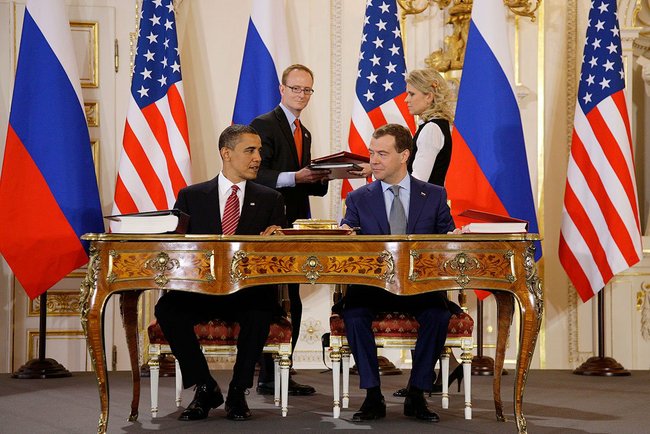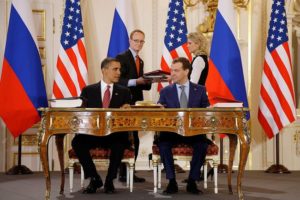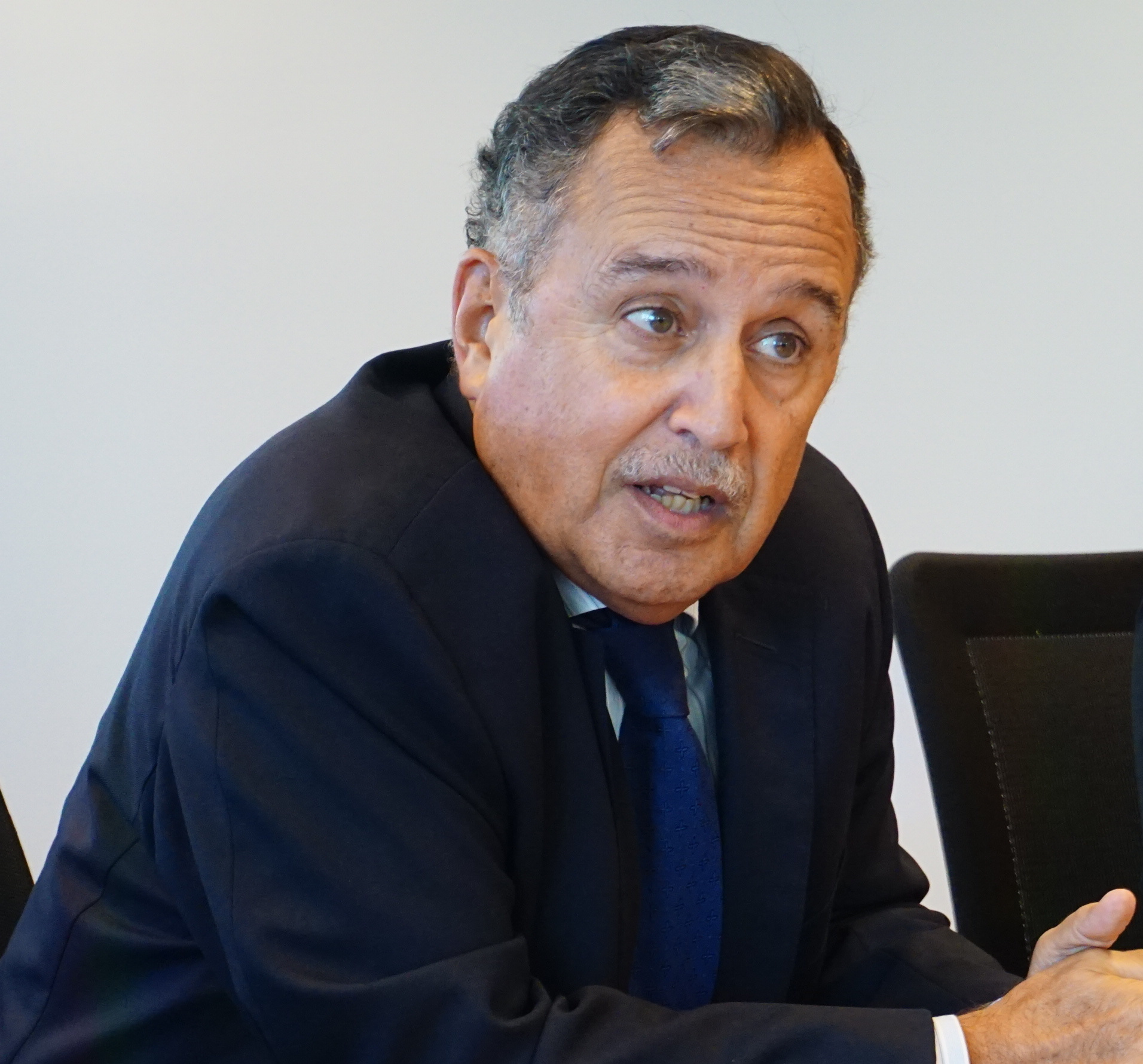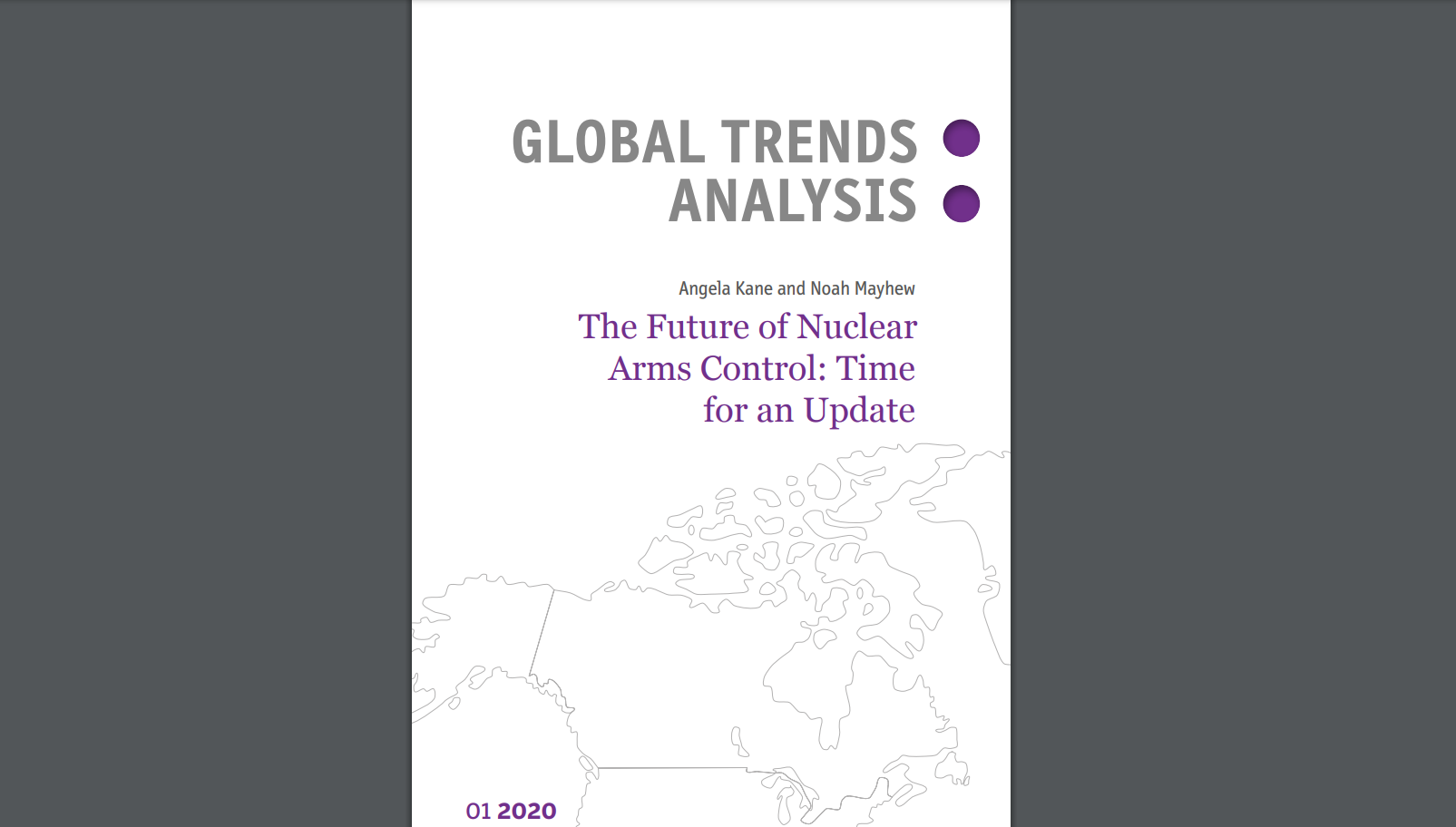
Dr. Nikolai Sokov
Senior Fellow
Vienna Center for Disarmament and Non-Proliferation

April 8 is the tenth anniversary of the signing of the New Strategic Arms Reduction Treaty (New START)—a bilateral US-Russian treaty that mandated the reduction of American and Russian strategic forces to 1,550 deployed nuclear warheads and 700 deployed delivery vehicles. Overall, the treaty has been a success: the parties have reduced their strategic weapons below these levels. According to the latest exchange of data as of March 1, 2020, the United States had 1,373 deployed warheads and Russia 1,326; the number of delivery vehicles was 655 and 485, respectively. That is, the two countries have fewer strategic weapons than they are entitled to, which is good news.
These figures conceal rather grim reality, however. In 2018, I wrote an article analyzing the state of strategic arms control and concluded that the prospects were not good: chances for the next treaty were slim and parties were nowhere near serious discussion of issues that divided them. Two years later, I can only conclude that things have become worse.
The future of New START remains uncertain. It expires in less than a year, but can be extended by another five years. The need for extension was obvious already in 2018—this was the only chance to maintain predictability and transparency of US and Russian strategic forces while at the same time buying time to negotiate a new treaty. Today, less than a year from the expiration of New START, extension is still pending, same as it was two years ago. Moscow keeps calling for extension almost weekly. Washington remains silent and appears to condition any movement on arms control, whether New START extension or new negotiations, on the participation of China, which is not particularly eager to join the process, to put it mildly.
Russia, in principle, supports multilateralizing the nuclear arms control process, but objects to linking it to New START extension. As explained recently by the Russian Ambassador to the United States Anatoly Antonov, Moscow continues to believe that New START should be the last bilateral treaty and that the next one must be multilateral. At the same time, it insists involvement of China in the nuclear arms process should be achieved by patient persuasion rather than pressure, and says there is simply not enough time to do that. Furthermore, for Russia, multilateralization means involving all five “official” (i.e., listed in the Nonproliferation Treaty) nuclear powers, that is, including the United Kingdom and France. Few in the United States even take note of that Russian position although it has been consistently repeated for many years.
There is an almost universal consensus that New START should be extended, and it seems likely that at the last moment the White House will agree to extension. How exactly this will work is far from obvious, since Moscow keeps repeating that it needs several months to have the parliament agree to it. On the other hand, the Kremlin will hardly allow legal formalities stand in the way. Overall, the situation will likely remain tense until the last moment.
There is still no new treaty in the works that could replace New START. Two years ago, I assessed the chances of negotiating a new treaty to replace New START as very low; today, they are even lower. New START itself was a replacement for START I, which had been signed in 1991 and expired in 2009. The transition from START I to New START was not smooth—the United States and Russia had to live without a strategic arms treaty for more than a year (from December 6, 2009 to February 5, 2011), but during that time they were either negotiating or ratifying, so it was obvious the replacement would come soon. Today, the parties have not even begun serious discussion of issues that were on the agenda two years ago, such as missile defense, long-range conventional strike weapons, and tactical nuclear weapons, and new issues have emerged since.
Even as parties were reducing their strategic nuclear weapons, qualitative upgrades have continued unabated. On March 1, 2018, Russian President Vladimir Putin presented a host of new weapons programs, including Avangard, a hypersonic glide warhead for strategic missiles; a new heavy intercontinental ballistic missile (ICBM), Sarmat, capable of reaching the United States from the south and thus undermining the effectiveness of NORAD; Kinzhal, an air-launched ballistic missile; Burevestnik, a nuclear powered air-launched cruise missile (ALCM) of supposedly unlimited range; and an unmanned underwater vehicle Poseidon. The latter two are still in the development stage (Burevestnik has reportedly suffered major setbacks as a result of a failed test), but the former three have either entered the deployment stage (Avangard and Kinzhal) or are near completion (Sarmat).
The United States insists that new Russian weapons are covered by strategic arms control regimes. Moscow has already said that Avangard and Sarmat (when it enters the deployment stage) will be accountable under New START, but other systems will require separate discussions and may become part of a new treaty—presumably in exchange for concessions by the United States.
The United States has only begun deployment of a low-yield warhead W76-2 on Trident II submarine-launched ballistic missiles (SLBMs), which, like Avangard, does not directly affect accounting under New START, which does not differentiate between various types of warheads. In the coming years, however, the United States will embark on an almost wholesale replacement of its aging strategic delivery vehicles. The new systems will be more advanced than existing ones. In other words, the United States follows the same path as Russia, but with significant delay—the loss of production and maintenance capacity forces the latter to begin the replacement cycle sooner.
It is difficult to gauge how new systems may be fitted into the next treaty. For example, the Kinzhal aeroballistic missile is in many ways (range, likely missions) similar to ALCMs but is deployed on non-strategic aircraft, whereas ALCMs can only be carried by heavy bombers. There will be other difficult questions. Further aggravating challenges of new negotiations will be the dual capability of ALCMs and sea-launched cruise missiles (SLCMs) as well as the old Russian demand that even purely conventional ALCMs and SLCMs be included into arms control negotiations one way or another (although Russia has been voicing its demand for at least two decades, it has not yet operationalized it in a set of specific accounting and limitation rules).
In any event, the traditional refusal of the United States to include long-range conventional assets into the strategic arms control process has become outdated and even dangerous because Russia has conventional ALCMs and SLCMs and is quickly increasing their numbers; Russian conventional capability is becoming a major headache for NATO. Yet, US Senate’s advice and consent resolution on New START expressly prohibits negotiations on these weapons, and how the current or the next US administration may handle that situation is far from clear.
Another old controversy, missile defense, also remains without change. Russia continues to insist that missile defense becomes part of a future treaty, one way or another, whereas the United States continues to refuse. The US Senate resolution on New START prohibits negotiations on that issue. Yet, Russia is slowly but surely increasing its own missile defense capability, and eventually the United States will need to contend with it, just as it now has to contend with the Russian long-range conventional capability. The issue of missile defense is primarily a matter of domestic politics, so it is difficult to predict how it may be resolved, but it may end up once again as a major impediment to arms control.
The state of arms control overall has significantly worsened since 2018. The most important development is, of course, the end of the Intermediate-range Nuclear Forces (INF) Treaty in 2019 after several years of increasingly acrimonious conflict: the United States accused Russia of violation while Russia denied it and, in turn, levied its own accusations against the United States. As both sides prepare for responses and counter-responses, Europe is slowly crawling into another Euromissile crisis similar to the one that took place in the early 1980s, but this time perhaps more intense because weapons are more capable and will likely be more numerous. One can already hear familiar talk about the need to deploy weapons to force Russia into arms control, a repeat of the 1980s gambit. But with the near-zero probability of a new Mikhail Gorbachev coming to power, this gambit is unlikely to work a second time.
Other arms control agreements ended even earlier, including keystone ones such as the 1990 Conventional Forces in Europe (CFE) Treaty or the 1991 Presidential Nuclear Initiatives (PNIs), which reduced non-strategic nuclear weapons. Today, New START is the only remaining nuclear arms control treaty that regulates US and Russian nuclear weapons. If it expires in 2021, the nuclear weapons of the two countries, for the first time since 1972, will be completely unregulated by any agreement whatsoever.
In short, little has changed since my 2018 piece and the few things that have changed are for the worse. Some hope that if a new US president is elected in 2020, things will get better—New START will be extended and negotiations on a replacement treaty will begin; five years should be sufficient to agree on a new bilateral treaty. In the meantime, both the United States and Russia could jointly try to convince China (perhaps also the United Kingdom and France) to join the process in one form or another. Indeed, challenges create opportunities and crises can produce innovative solutions. There is only one condition—there should be political will to use the opportunities and to find solutions.
Unfortunately, the outlook remains bleak. Positions of the two sides remain very different and there is little political will to bring them closer. Furthermore, including new classes of weapons (such as intermediate- and long-range conventional and dual-capable missiles, missile defense, etc.) will require new approaches: the framework of START was not designed to incorporate them. Resumption of serious arms control will require a truly cooperative atmosphere, which characterized INF and START I negotiations in the late 1980s. The main question is not whether we can solve outstanding issues—we certainly can. The question is whether we can muster enough political will to search for solutions.
A PDF version of this article is available for download here.


